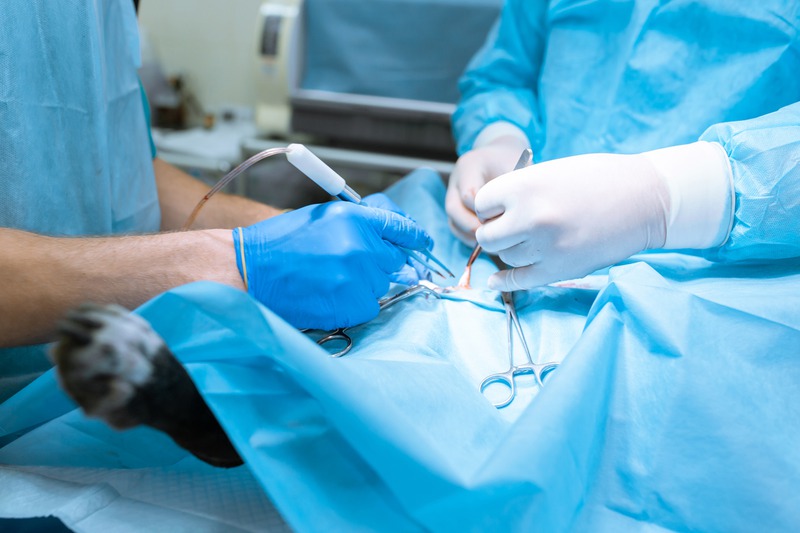Preparing for your pet’s surgery can be a moment filled with anxiety and many questions. Whether it’s a routine procedure or something more complex, knowing what to expect can help ease your mind and ensure you’re providing the best care for your furry friend. Let’s describe what you’ll need to know at each process stage.
Before Pet Surgery
The period leading up to surgery is crucial for setting the stage for a successful operation and a smooth recovery. Here’s what you should consider:
-
Understanding the Need for Surgery: Your veterinarian will explain why surgery is necessary, covering risks and benefits to help you make an informed decision.
-
Preoperative Instructions: Follow your vet’s guidelines on fasting, medications, and other preparatory steps.
-
Preparing Your Pet: Ensure your pet is calm and comfortable before the procedure. A stress-free environment can make a significant difference.
When it comes to veterinary surgery, knowing ahead of time what procedure your pet needs and why it’s necessary can provide peace of mind. Your vet will likely perform preoperative blood tests to ensure your pet is healthy enough for surgery and discuss any potential complications. Click here to learn more about veterinary surgery.
During Surgery
Although you won’t be in the operating room, it’s helpful to know what happens during your pet’s surgery:
-
Monitored Anesthesia: Your pet will be under anesthesia, with the veterinary team closely monitoring vital signs.
-
Surgical Protocol: A sterile environment is maintained, and the surgical team will follow strict protocols to ensure the safety and health of your pet.
-
Communication: Your veterinary clinic should update your pet’s status and notify you as soon as the surgery is complete.
Your pet’s safety is the top priority during any surgical procedure. A competent surgical team will take every precaution to ensure everything goes smoothly, from administering anesthesia to the final stitch.
Post-Operative Care
After surgery, the focus shifts to helping your pet recover as comfortably and quickly as possible:
-
Immediate Post-Operative Period: Your pet will be moved to a recovery area where they’ll be closely observed as the anesthesia wears off. Pets are typically groggy and disoriented during this time, so they may require additional warmth and quiet to rest comfortably.
-
Managing Pain and Discomfort: Pain management is critical to post-operative care. Your vet will prescribe medications to control discomfort and outline signs of excessive pain to watch for at home.
Other Post-Operative Instructions
Every pet is unique, and recovery times can vary depending on the surgery performed and your pet’s overall health. Your vet will provide instructions for home care, which may include:
-
Restricting Activity: Every pet is unique, and recovery times can vary depending on the surgery performed and your pet’s overall health. Your vet will provide instructions for home care, which may include restricting activity to prevent injury to the surgical site.
-
Creating a Calm Environment: Your vet will also likely recommend keeping your pet’s environment calm and stress-free during recovery. This may involve minimizing noise, limiting interactions with other pets or children, and providing a comfortable, quiet space for your pet to rest.
-
Monitoring the Incision: Monitoring the surgical incision for signs of infection or abnormal discharge is crucial. Your veterinarian will provide specific instructions on what to look for and how to properly care for the incision to promote healing and reduce the risk of complications.
-
Administering Medications: Your vet may prescribe medications to help manage pain, prevent infection, or address other post-operative concerns. It’s essential to administer these medications as directed and closely monitor your pet’s response. Additionally, make sure your pet remains comfortable throughout the recovery process, providing any necessary accommodations or adjustments to their care as needed.
In the middle of all this, knowing where to go for comprehensive services is essential should any concerns arise. The Spanish Trail Pet Clinic Tucson can be an excellent resource for pet owners seeking a holistic approach to their health and post-op recovery.
Tips for a Successful Recovery
How you care for your pet after surgery is as crucial as the procedure itself. Here are some practical tips:
-
Stick to the vet’s recovery plan, and don’t skip follow-up appointments
-
Keep your pet’s living area clean and free of obstacles
-
Use an Elizabethan collar if necessary to prevent licking or chewing at the incision site
-
Be patient and give your pet plenty of love and reassurance throughout the healing process
Beyond the immediate post-surgical period, keeping an eye on your pet’s long-term health is essential. A well-rounded approach includes regular check-ups, a balanced diet, and staying up-to-date on cat vaccinations to fend off diseases. Not only do vaccinations protect your cat from serious health issues, but they also contribute to the overall well-being of the pet community by preventing the spread of infectious diseases.
Final Thoughts
Seeing your pet through surgery is a challenging experience, but with the proper knowledge and support, you can help them on their journey back to health. Trust your vet, stick to the guidelines, and take each day as it comes – you’ll be back to enjoying your regular routines with your pet in no time. Remember that every pet is an individual, and some may bounce back quickly. And if you have concerns about your pet’s recovery, do not hesitate to contact your veterinarian – they’re your partner in your pet’s health journey.





